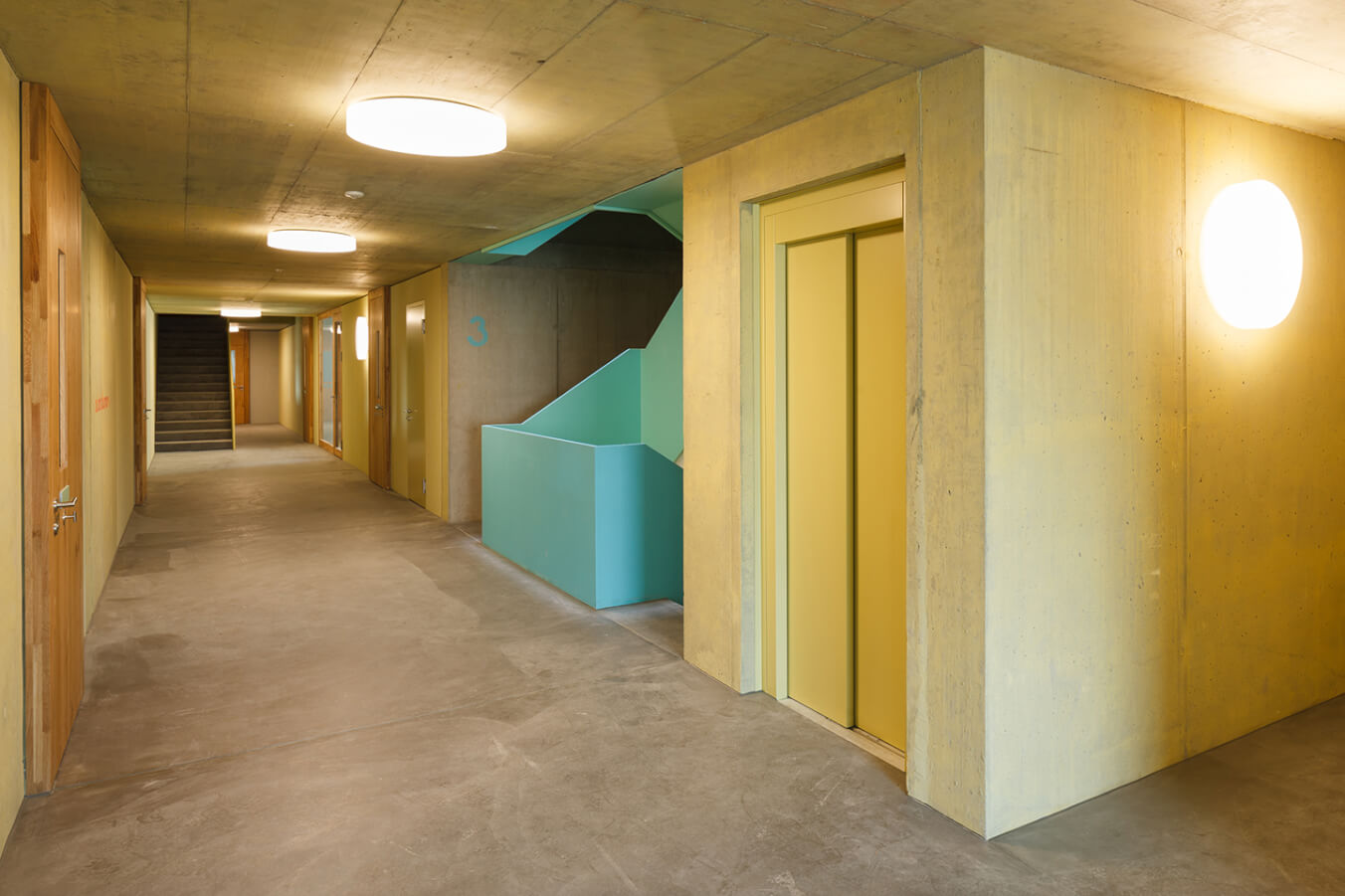Problem
The built environment should be fully accessible and usable for everyone. In 2006, the UN Convention on the Rights of Persons with Disabilities stipulated equal opportunities, participation and access for all people. Accessibility in all areas of buildings, means of transport and information systems – the built environment – is deficient: in 2018, only around 2% of apartments and single-family houses in Germany were designed to be completely barrier-free (Statistische Ämter des Bundes und der Länder, Tab. 6). In addition, a majority of disabilities occur later in life; only 3% are congenital (Destatis 2020, p. 13). And the demographic change is leading to an increasing need for accessible environments. Inclusive architecture should ensure independent and easy use of buildings for people with impairments and disabilities (Sikiba & Züger 2016, p. 22) as well as create awareness of their needs. How can accessibility and inclusive architecture be implemented in terms of design and how can the built environment be adapted?
Generic description
Accessible planning means thinking about the future of ageing and thus building or remodelling in a way that is barrier-free, inclusive and adaptable from the outset. The planning phase offers the greatest potential for implementing accessibility and the needs of people with disabilities later on (DGNB 2018, p. 414). Flexibility in the form of flexible floor plans and adaptable architecture, for example as a skeleton construction, facilitate later conversions as well as repurposing and avoid the need for relocation in the event of a disability or restriction occurring later.
Barrier-free and inclusive design includes the following principles and requirements: Step-free accessibility, visually and tactilely contrasting design, and adherence to the two-senses principle (at least two of the three senses of sight, hearing, and touch should be addressed). Requirements for premises, infrastructures, access to outdoor space, structural design as well as structures of the public space have to be considered. Essential to step-free access are elevators, ramps with a maximum slope of 6%, and threshold-free transitions to outdoor spaces, commercial spaces, apartments, common areas, stairwells, bathrooms, toilets, balconies, terraces, and gardens (BBSR 2016, p. 251). Wheelchair-accessible design continues to include doors with a minimum width of 0.9 m, hallways with a minimum width of 1.5 m, and specially equipped kitchens, bathrooms, and toilets. Parking spaces for impaired drivers must also be provided. Rest areas, automatic doors, hands-free sensors, audible and security systems, and lighting-controlling timers can supplement accessible design. The use of high-contrast colours and guidance systems also facilitate orientation for the blind or people with impaired vision. The interaction of users with their built environment is influenced by the choice of systems and materials. Furthermore, tactile surfaces can convey information and provide orientation. Non-slip surfaces support walking with a cane and wheelchair handling. Handrails on walls and in areas such as bathrooms and stairwells are also crucial when designing for people with limited mobility (AD Editorial Team 2019).
Example
In Kalkbreite Zürich, there are mostly barrier-free accessible commercial spaces, common indoor and outdoor spaces, gardens, apartments, staircases and elevators. The apartments themselves are also either adaptable to needs or already designed according to the spatial requirements of wheelchair users – only the wheelchair-accessible design and equipment of the bathrooms was designed according to the wishes of the first tenants and thus specified (Genossenschaft Kalkbreite n.y.). Furthermore, there are parking spaces on the premises for drivers with disabilities. Opportunities for participation and design for children were also implemented in Kalkbreite.
In the Quartier WIR Berlin, an almost barrier free architecture was applied; it was not possible to implement complete accessibility in the neighbourhood. The quarter for intergenerational living can be accessed in all buildings and floors with wheelchair-accessible elevators. Threshold-free crossings in the exterior and interior areas and floor-level showers in the apartments have been integrated. In addition, the common areas and one third of the apartments are barrier-free. The utilisation concept is also inclusive and geared to social concerns.
The c13 Berlin is barrier-free all around in its public area. In addition to the stairs and an elevator, a ramp with a maximum incline of 6% is available to access the first floor. The corridors have a minimum width of 1.5 m; the entrance doors of at least 0.9 m.
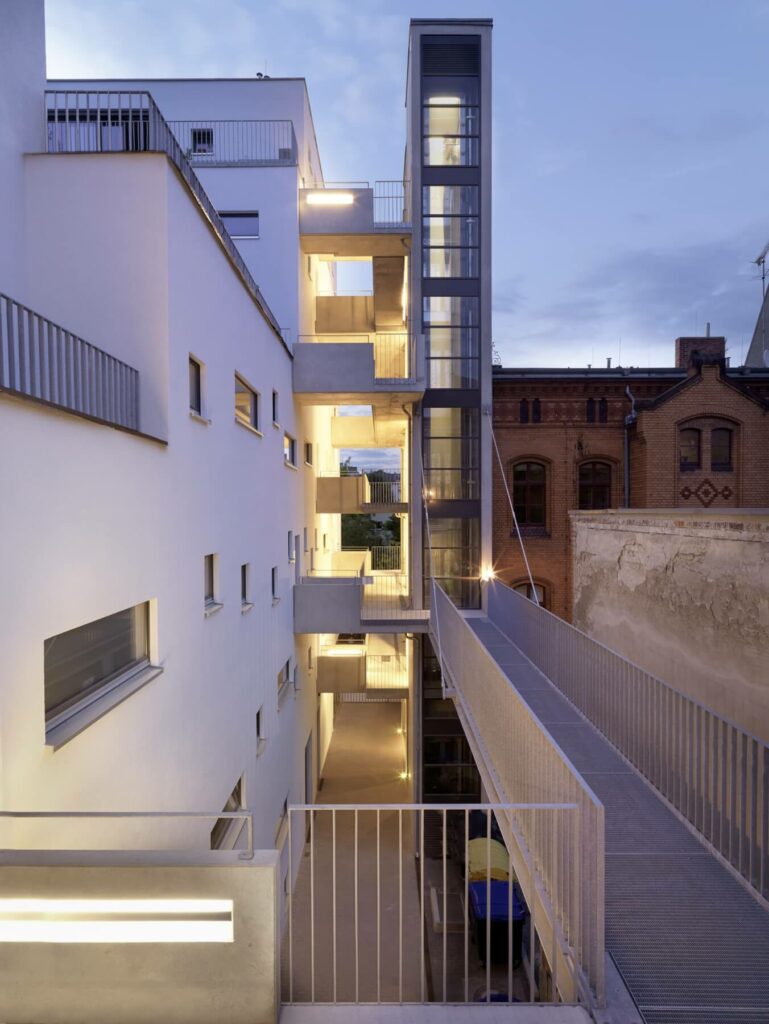
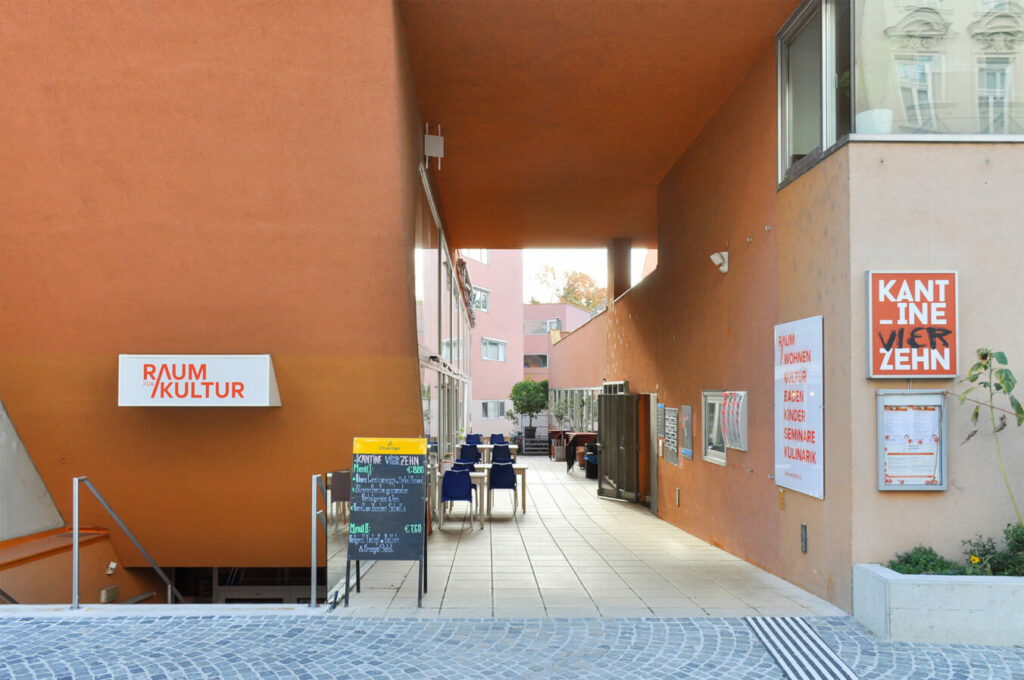
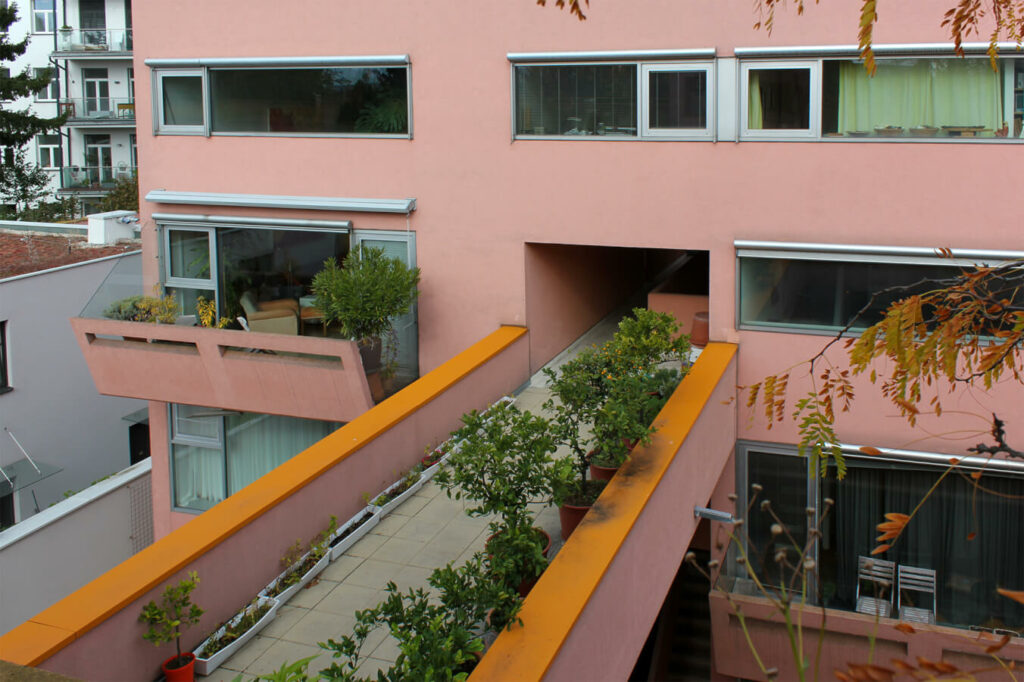
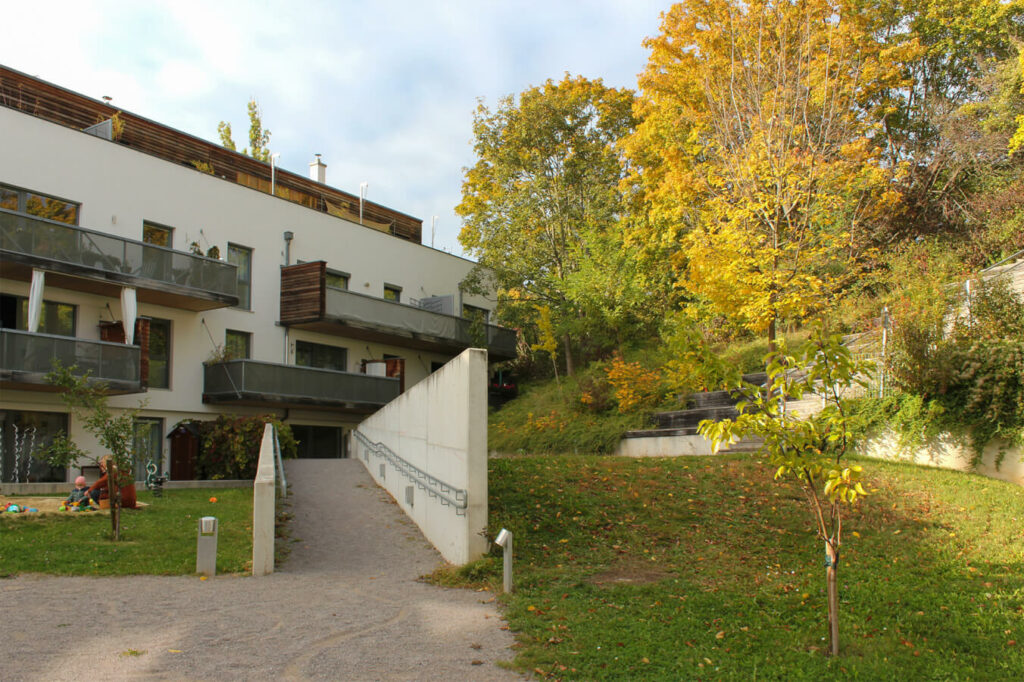
Lessons learned and synergies
Inclusive architecture and barrier-free planning can contribute to facilitating the lives of people with limitations and disabilities according to their needs, in order to enable, as stipulated in Article 9 of the UN Convention on the Rights of Persons with Disabilities, “[…] independent living and full participation in all areas of life[…]” (Beauftragte der Bundesregierung für die Belange von Menschen mit Behinderungen 2017, p. 13). Thus, they can have a sustainable social impact. This requires consistently avoiding barriers in planning, thinking long-term, and removing or transforming existing structural barriers. The higher space requirements and the development systems require an investment, but create a great sustainable added value. Participatory planning and inclusive use by people affected by disabilities, children and the elderly is important on the way to inclusive architecture (Herwig 2008, p. 162).
Sources
AD Editorial Team (2019): Trends Report: Inclusive Design. Accessed on 28.04.2021 from https://www.archdaily.com/915588/trends-report-march-2019-inclusive-design
Bundesinstitut für Bau-, Stadt- und Raumforschung (BBSR) (Hrsg.) (2016): Zukunft Bauen: Forschung für die Praxis|Band 01: ready – vorbereitet für altengerechtes Wohnen: Neue Standards und Maßnahmensets für die stufenweise, altengerechte Wohnungsanpassung im Neubau. BBSR: Bonn. Accessed on 28.04.2021 from https://www.readyhome.de/
Beauftragte der Bundesregierung für die Belange von Menschen mit Behinderungen (2017): Die UN-Behindertenrechtskonvention: Übereinkommen über die Rechte von Menschen mit Behinderungen. Berlin.
Bundesarchitektenkammer (BAK) (o.J..): Inklusiv gestalten – Barrierefrei Bauen. Accessed on 28.04.2021 from https://www.bak.de/berufspolitik/inklusiv-gestalten-barrierefrei-bauen-2/
Deutsche Gesellschaft für nachhaltiges Bauen (DGNB) (Hrsg.) (2018): DGNB System: Kriterienkatalog Gebäude Neubau. 3. Auflage, Stuttgart: DGNB GmbH.
Ed Roberts Campus (2021): Design. Accessed on 28.04.2021 from https://www.edrobertscampus.org/design/
Genossenschaft Kalkbreite (o.J.): Bestimmungen zur Wohnungsvermietung. Accessed on 28.04.2021 from https://www.kalkbreite.net/kalkbreite/mieten/kriterien-vermietung/
Gunßer, C. (2019): Inklusiv bauen. Accessed on 28.04.2021 from https://www.dabonline.de/2019/03/30/inklusiv-bauen-barrierefreiheit-wohnen/#a71618
Herwig, O. (2008): Universal Design. Berlin, Boston: Birkhäuser.
Skiba, I. & Züger, R. (2016): Basics Barrierefrei Planen. Basel/Berlin/Boston: Walter de Gruyter GmbH.
Statistische Ämter des Bundes und der Länder (Hrsg.) (2019): Wohnen in Deutschland: Zusatzprogramm des Mikrozensus 2018. Accessed on 22.06.2021 from https://www.destatis.de/DE/Themen/Gesellschaft-Umwelt/Wohnen/Publikationen/Downloads-Wohnen/wohnen-in-deutschland-5122125189005.html
Statistisches Bundesamt (Destatis) (2020): Statistik der schwerbehinderten Menschen: Kurzbericht 2019. Statistisches Bundesamt (Destatis).
WEKA MEDIA GmbH & Co. KG (2019): Gemeinschaft in Holz. Accessed on 22.06.2021 from https://utb-berlin.de/wp-content/uploads/2016/12/utb_mikado-magazin_2019_gemeinschaft-in-holz.pdf
Zimmerli, J. & Mueller Schmid, N. (2016): Giesserei, das Mehr‐Generationen‐Haus. Winterthur: Genossenschaft für selbstverwaltetes Wohnen.
